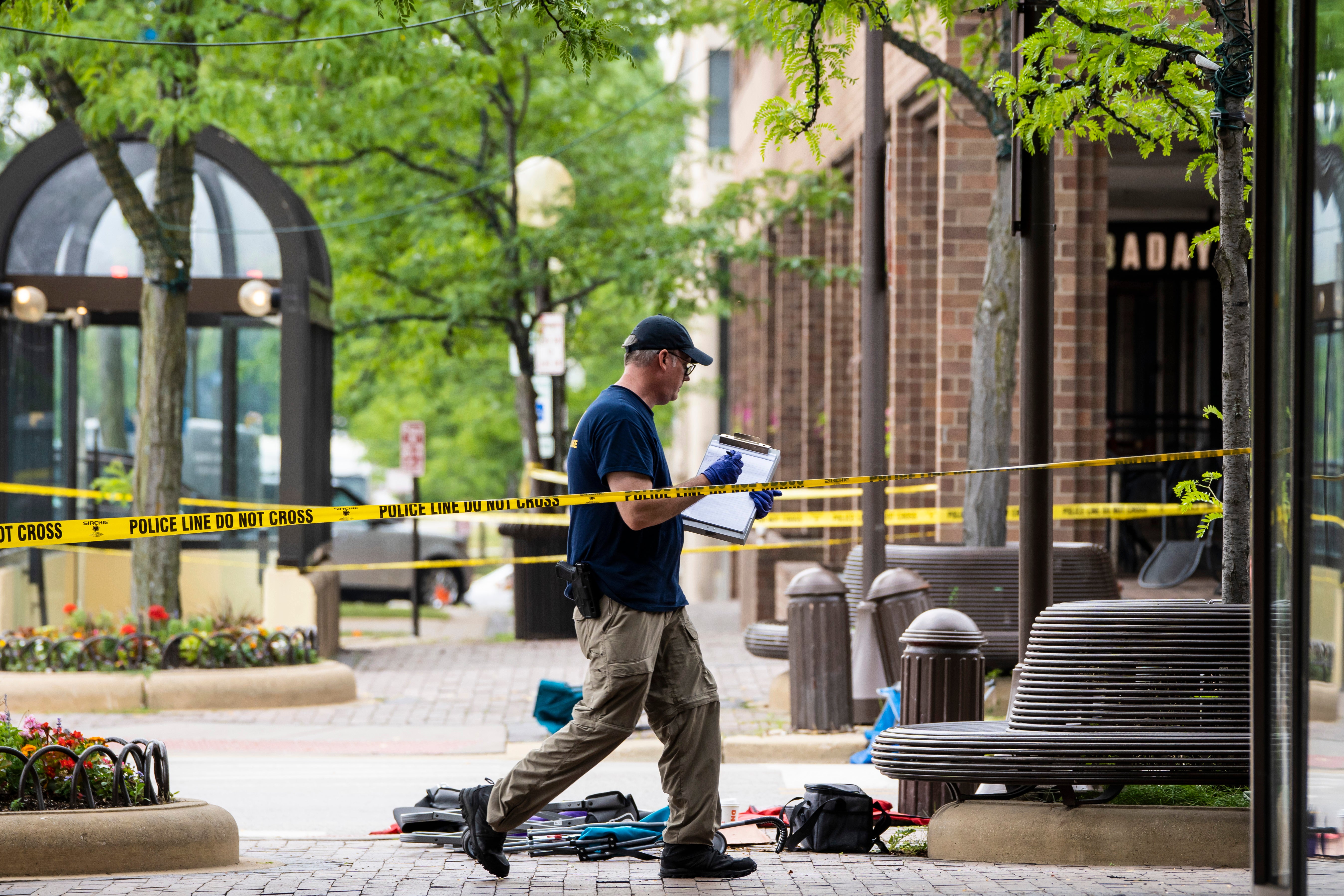Highland Park set tight gun limits long before parade attack
The latest act of mass violence to hit the U.S. has focused attention on Highland Park’s 2013 ban on semi-automatic weapons and large-capacity magazines

Your support helps us to tell the story
From reproductive rights to climate change to Big Tech, The Independent is on the ground when the story is developing. Whether it's investigating the financials of Elon Musk's pro-Trump PAC or producing our latest documentary, 'The A Word', which shines a light on the American women fighting for reproductive rights, we know how important it is to parse out the facts from the messaging.
At such a critical moment in US history, we need reporters on the ground. Your donation allows us to keep sending journalists to speak to both sides of the story.
The Independent is trusted by Americans across the entire political spectrum. And unlike many other quality news outlets, we choose not to lock Americans out of our reporting and analysis with paywalls. We believe quality journalism should be available to everyone, paid for by those who can afford it.
Your support makes all the difference.In a state with some of the country’s toughest gun regulations and a city that bans semi-automatic weapons, Dana Gordon still feared a mass shooting could happen here.
Gordon, a Highland Park resident and an anti-gun violence activist, knew the familiar questions from victims of mass shootings across the country — how could such violence could come to their school, their supermarket or movie theater, their city.
The latest act of mass violence to hit the U.S. came Monday in the northern Chicago suburb, when police said a gunman climbed to the top of a business along Highland Park's Independence Day parade route and opened fire. Seven people died and more than 30 people were wounded.
The violence has focused attention on Highland Park's 2013 ban on semi-automatic weapons and large-capacity magazines.
Illinois officials have long contended that legal and illegal weapons are easily purchased in surrounding states, hampering local laws' effectiveness. Authorities said Tuesday that the suspected gunman, a 21-year-old resident of nearby Highwood, legally purchased the rifle used in the attack in the Chicagoland area but did not say exactly where he bought it.
They also have not specified the type of weapon used, only describing it as high powered and “similar to an AR-15.”
Highland Park's clampdown survived a legal challenge from a local pediatrician and the Illinois State Rifle Association that ended at the U.S. Supreme Court's doorstep in 2015 when justices declined to hear the case.
Highland Park Mayor Nancy Rotering responded to the win, at the time arguing: “Banning assault weapons and large capacity magazines is a common sense step to reducing gun violence and protecting our children, our law enforcement and our communities from potential mass violence and grief.”
Two conservative justices — Justice Clarence Thomas, joined by Justice Antonin Scalia — said they would have heard the case and struck Highland Park's limits.
"The overwhelming majority of citizens who own and use such rifles do so for lawful purposes, including self-defense and target shooting,” Thomas wrote.
For Gordon and other activists in Highland Park, Monday's violent attack was a push to continue working toward national restrictions on such weapons and ammo.
Highland Park’s local and federal elected officials back gun restrictions, showing it by their presence at anti-gun violence rallies and their votes. Police were also stationed all along the parade route. But that didn’t stop the killings on Monday, Gordon said.
“People have to realize, there’s nothing that makes any community immune,” she said. “The only thing that’s going to help any of us is if we vote out legislators who refuse to do anything about guns.”
Gordon helped organize an anti-gun violence arts event in town last month following the mass shootings at a supermarket in Buffalo, New York, and a school in Uvalde, Texas. Weeks later, she was fielding receiving phone calls from friends who fled their city's holiday parade in terror.
Gordon said since the shooting she’s received dozens of emails from friends and neighbors, expressing their shock that such violence could hit their home. She said it gives her hope that influential voices can make a change — tempered by her belief that national change is the only hope of preventing future mass shootings.
“You can’t protect people all the time,” she said. “This is a gun issue.”
The Buffalo and Uvalde killings did prompt Congress to pass the most sweeping gun violence bill in a decade. The package toughens background checks for the youngest gun buyers, keeps firearms from more domestic violence offenders and helps states put in place red flag laws that make it easier for authorities to take weapons from people adjudged to be dangerous.
But it was signed into law just days after the Supreme Court’s ruling struck down a New York law that restricted peoples’ ability to carry concealed weapons. And it didn't include more sweeping proposals long backed by activists including an assault-style weapons ban and background checks.
“I know there’s much more work to do, and I’m never going to give up, but this is a monumental day,” President Joe Biden said after signing the bill on June 25.